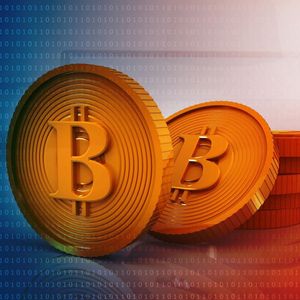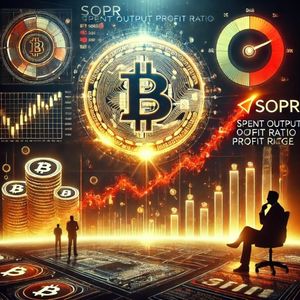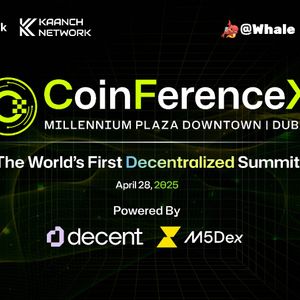The world of finance has been witnessing a quiet revolution as tokenized real-world assets (RWAs) have made their way onto the blockchain. In simple terms, tokenization entails turning things like government bonds, real estate, or loans into digital tokens and in 2024, this convergence kicked into high gear — so much so that by early 2025 the total market value of tokenized RWAs on public blockchains had swelled to nearly $18 billion, up from about $10 billion just a year before. Thus, what was once a niche experiment seems to have become a burgeoning movement capable of attracting major banks, asset managers, and fintech innovators. Total on-chain assets as of Q1 2025 (source: Investax.io ) The growth is undeniably real Not long ago, the idea of buying a fraction of a commercial building or a sliver of a government bond using a DeFi platform would have sounded far-fetched. Today, it’s a reality as a wave of projects has brought RWAs on-chain, with the numbers telling a very promising story. For starters, U.S. Treasury securities, which are practically digital mirror images of government bonds, have emerged as one of the fastest-growing segments, with over $6.9 billion worth of these offerings being issued as tokens recently (offering investors a yield of over 4% alongside added perks like 24/7 tradability and near-instant settlements). Tokenized treasury metrics (source: rwa.xyz ) Similarly, private credit consisting of loans and other debt investments traditionally accessible only to institutions now accounts for the largest share of the RWA token market, surpassing $13 billion in value. Crucially, it’s not just crypto startups or DeFi degens driving this trend as major players from the trad-fi have now become deeply involved with the ecosystem. To this point, last year, several household-name institutions rolled out tokenized asset projects, signaling a big shift in mindset. BlackRock, the world’s largest asset manager, for instance, made headlines by launching a tokenized money market fund called BUIDL, which in a matter of weeks grew to hundreds of millions in on-chain assets. By early 2025, BUIDL’s assets under management had ballooned to $2.47 billion , giving it a 42% share of the tokenized Treasury market. Not far behind, Franklin Templeton, a storied mutual fund company, saw over $700 million flow into its own tokenized U.S. government money fund while JPMorgan and other big banks announced their explorations into tokenized treasury funds. Things haven't stopped at bonds as alternative asset giants like Apollo Global Management have started tokenizing private credit funds, and firms such as Hamilton Lane and UBS launched tokenized feeder funds for private equity and money markets. The Bitcoin gold standard and SatLayer’s vision for a new economy Up to now, much of the RWA tokenization trend has played out on smart contract platforms like Ethereum, or on permissioned ledgers set up by banks, with Bitcoin largely being relegated to the background. However, SatLayer is changing that narrative by positioning Bitcoin as the programmable foundation for a new tokenized economy. In essence, SatLayer envisions Bitcoin becoming the “gold standard” of a modern digital economy, where BTC’s solid security foundation and monetary properties underwrite the next generation of DeFi and RWA platforms . That said, what exactly is SatLayer? In simple terms, SatLayer is a shared security platform that uses Bitcoin as the bedrock collateral to secure other applications. One can think of it as a way to plug Bitcoin’s power into the rest of the blockchain universe. However, while Bitcoin’s own blockchain is highly secure, it has been intentionally limited in its functionality, not being designed for running complex smart contracts or supporting millions of tokenized assets directly. SatLayer works around that limitation by operating through smart contracts on companion networks (such as Babylon), interfacing directly with Bitcoin. This allows the flagship crypto to do more than just sit in a cold wallet, enabling it to actively backstop decentralized apps. Moreover, if these services operate honestly, the collateral remains safe and earns rewards for participants; however, if there’s any misbehavior or a breach of rules detected, the system can slash (forfeit) some of that collateral as a penalty. Lastly, it bears mentioning that in late 2024, SatLayer integrated with the Sui blockchain, bringing Bitcoin’s security and liquidity into the latter’s fledgling DeFi economy. By early 2025, over $2 billion worth of Bitcoin was set to be plugged in as shared security for various proof-of-stake blockchains, with SatLayer extending that security to the applications running on those chains. A new era begins? Soon, the lines between traditional markets and crypto markets stand to become increasingly blurred with stocks, bonds, real estate, and commodities living atop different blockchain networks. The broader RWA ecosystem will also likely expand thanks to support from both legacy institutions and crypto-native innovations (as instruments like debt tokens and real estate investment trusts (REITs) gain traction). Disclaimer: This article is provided for informational purposes only. It is not offered or intended to be used as legal, tax, investment, financial, or other advice.



















